SLUSDW4A October 2019 – November 2020 LMR50410-Q1
PRODUCTION DATA
- 1 Features
- 2 Applications
- 3 Description
- 4 Revision History
- 5 Device Comparison Table
- 6 Pin Configuration and Functions
- 7 Specifications
- 8 Detailed Description
-
9 Application and Implementation
- 9.1 Application Information
- 9.2
Typical Application
- 9.2.1 Design Requirements
- 9.2.2
Detailed Design Procedure
- 9.2.2.1 Custom Design With WEBENCH® Tools
- 9.2.2.2 Output Voltage Set-Point
- 9.2.2.3 Switching Frequency
- 9.2.2.4 Inductor Selection
- 9.2.2.5 Output Capacitor Selection
- 9.2.2.6 Input Capacitor Selection
- 9.2.2.7 Bootstrap Capacitor
- 9.2.2.8 Undervoltage Lockout Set-Point
- 9.2.2.9 Maximum Ambient Temperature
- 9.2.3 Application Curves
- 10Power Supply Recommendations
- 11Layout
- 12Device and Documentation Support
- 13Mechanical, Packaging, and Orderable Information
Package Options
Mechanical Data (Package|Pins)
- DBV|6
Thermal pad, mechanical data (Package|Pins)
Orderable Information
7.9 Typical Characteristics
VIN = 12 V, fSW = 2.1 Mhz ,TA = 25°C, unless otherwise specified.
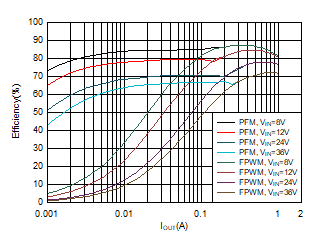
| fSW = 2.1 MHz | VOUT = 3.3 V |
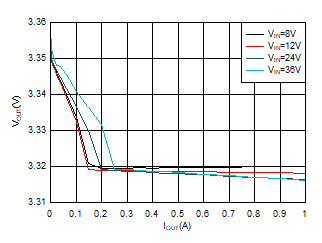
| fSW = 2.1 MHz | VOUT = 3.3 V | PFM version |
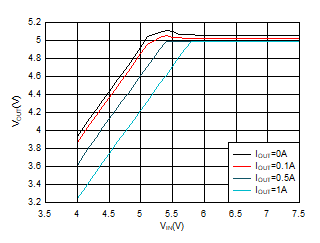
| fSW = 2.1 MHz | VOUT = 5 V | PFM version |
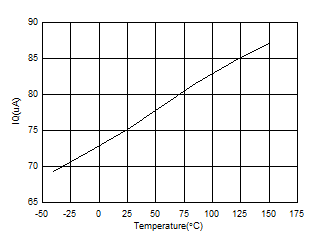
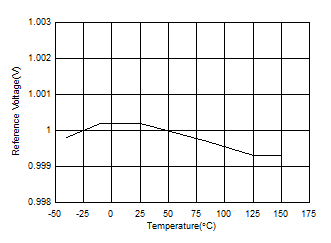 Figure 7-9 Reference Voltage versus Temperature
Figure 7-9 Reference Voltage versus Temperature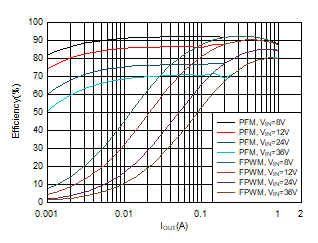
| fSW = 2.1 MHz | VOUT = 5 V |
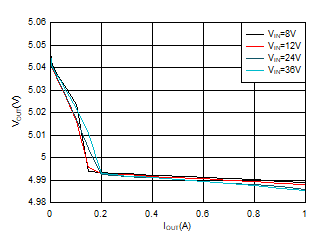
| fSW = 2.1 MHz | VOUT = 5 V | PFM version |
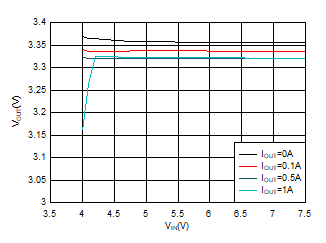
| fSW = 2.1 MHz | VOUT = 3.3 V | PFM version |

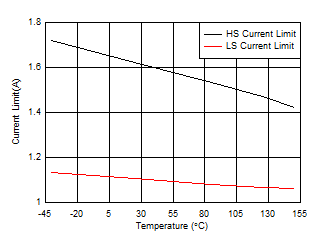 Figure 7-10 HS
and LS Current Limit versus Temperature
Figure 7-10 HS
and LS Current Limit versus Temperature